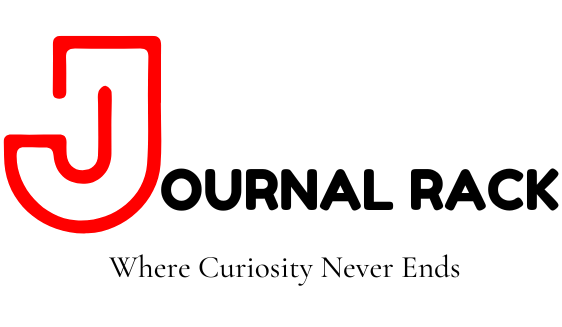Natural Language Understanding (NLU) is a highly critical component of artificial intelligence, enabling machines to comprehend, interpret, and generate human language. Over the past few years, BERT (Bidirectional Encoder Representations from Transformers) has revolutionized NLU with its deep contextual learning capabilities.
However, as the field progresses, researchers are looking beyond BERT to explore more advanced architectures that enhance language understanding. For professionals aiming to master the evolving AI landscape, enrolling in classes is essential. A data scientist course in Hyderabad provides hands-on experience with cutting-edge NLU models, ensuring that learners are specifically equipped with the latest advancements in artificial intelligence.
The Evolution of NLU and BERT’s Impact
BERT introduced a transformative approach to NLU by leveraging bidirectional context, meaning it analyzes words in relation to all other words in a sentence rather than just in a sequential manner. This breakthrough significantly improved tasks such as question answering, text summarization, and sentiment analysis. However, despite its strengths, BERT has limitations, such as high computational requirements and difficulties handling longer sequences.
Challenges with BERT and the Need for Advanced Models
Although BERT has revolutionized NLU, it is not without its challenges. One major limitation is its reliance on vast amounts of labeled data, making training expensive and resource-intensive. Additionally, BERT struggles with real-time applications due to its high computational cost. By enrolling in a course in Hyderabad, professionals learn about techniques to optimize BERT models and explore alternatives that address these challenges.
Another issue with BERT is its limited ability to capture long-range dependencies. While transformers have improved contextual understanding, they still struggle with lengthy documents. Researchers are actively working on new architectures that extend BERT’s capabilities, such as Longformer, Reformer, and BigBird, which are discussed in-depth in classes.
Beyond BERT: Emerging NLU Models
The demand for more efficient and powerful NLU models has led to the development of innovative architectures. Some of the most notable advancements beyond BERT include:
1. RoBERTa (Robustly Optimized BERT Pretraining Approach) RoBERTa enhances BERT by removing the Next Sentence Prediction (NSP) task and training on more data with dynamic masking. This results in better performance on various NLU benchmarks. A data scientist course in Hyderabad covers RoBERTa’s improvements and practical applications.
2. T5 (Text-to-Text Transfer Transformer) T5 redefines NLU by converting all language tasks into a text-to-text format. This flexible framework simplifies the process of training and fine-tuning models for diverse tasks such as translation, summarization, and question answering.
3. GPT-4 (Generative Pre-trained Transformer 4) While primarily known for text generation, GPT-4 has advanced capabilities in contextual understanding and reasoning. Unlike BERT, which is a bidirectional encoder, GPT-4 operates as an autoregressive model, generating more coherent and context-aware responses. By enrolling in a course in Hyderabad, professionals learn how to integrate GPT-4 with other NLU frameworks to create sophisticated AI applications.
4. ALBERT (A Lite BERT) ALBERT reduces BERT’s complexity by using parameter-sharing techniques, making it more efficient without compromising accuracy. This model is usually useful for organizations with limited computational resources. Data scientist course include modules on optimizing ALBERT for various language processing tasks.
5. XLNet XLNet builds upon BERT by incorporating permutation-based training, which improves its ability to capture dependencies across words. This results in better accuracy for tasks like text classification and sentiment analysis. A course provides insights into XLNet’s advantages and real-world applications.
The Role of Multimodal NLU Models
The future of NLU goes beyond text-based models. Multimodal models that combine text, image, and speech processing are gaining popularity. For example, OpenAI’s CLIP and Google’s MUM (Multitask Unified Model) integrate multiple data types to improve comprehension and reasoning. Classes explore these models and teach how to leverage them for AI-driven applications.
Low-Resource Language Processing (Natural Language)
Another frontier in NLU research is the development of models that can understand low-resource languages. Most state-of-the-art models are trained on high-resource languages like English, leaving many global languages underrepresented. Advances in transfer learning and multilingual training, such as in XLM-R (Cross-lingual Language Model), are helping bridge this gap.
Ethical Considerations and Bias Mitigation in NLU
As NLU models become more powerful, ethical concerns such as bias and misinformation must be addressed. Many AI models inherit biases present in training data, leading to unfair or inaccurate outcomes. Researchers are developing fairness-aware training techniques and bias mitigation strategies. Classes provide a comprehensive understanding of ethical AI practices, ensuring that professionals can build responsible AI systems.
The Future of NLU and Career Opportunities
With the rapid evolution of NLU models, the demand for AI specialists continues to rise. Organizations seek professionals with expertise in advanced NLP frameworks, prompting many to pursue a course in Hyderabad. Career opportunities in AI research, chatbot development, sentiment analysis, and voice assistants are expanding, making NLU a lucrative field for aspiring data scientists.
The integration of NLU with real-world applications, such as virtual assistants, automated content generation, and AI-driven customer support, underscores its importance in the AI landscape. Classes equip learners with the skills to develop, fine-tune, and deploy state-of-the-art NLU models, ensuring that they highly stay ahead in the competitive AI industry.
Conclusion
The future of Natural Language Understanding is moving beyond BERT, with innovative models that enhance contextual comprehension, efficiency, and scalability. Emerging architectures like RoBERTa, T5, GPT-4, ALBERT, and XLNet are setting new standards in NLU, while multimodal learning and low-resource language processing are broadening AI’s capabilities.
Ethical considerations are also shaping the development of fair and unbiased language models. By enrolling in classes, professionals can gain the expertise needed to work with cutting-edge NLU technologies. A data scientist course in Hyderabad provides hands-on experience in implementing these models, preparing individuals for a successful career in artificial intelligence. As the AI field continues to grow, mastering advanced NLU techniques will be crucial for driving innovation and shaping the future of intelligent language systems.
ExcelR – Data Science, Data Analytics and Business Analyst Course Training in Hyderabad
Address: Cyber Towers, PHASE-2, 5th Floor, Quadrant-2, HITEC City, Hyderabad, Telangana 500081
Phone: 096321 56744





